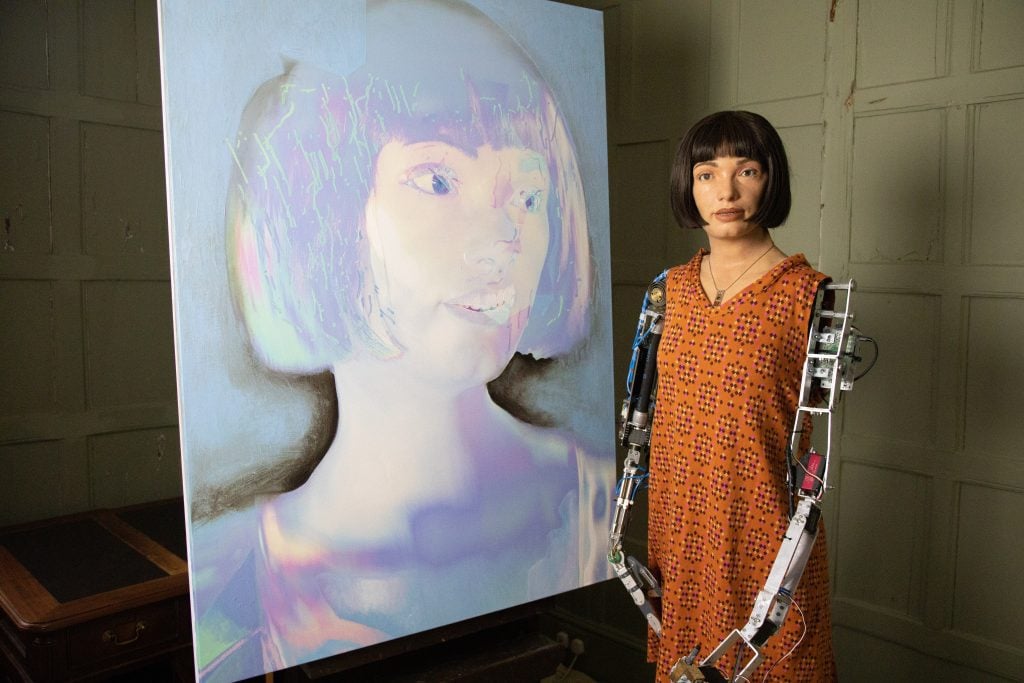Ai-Da can both draw and engage in lively discussion. Her robotic arm, developed by Salah Al Abd and Ziad Abass, enables her to hold a pencil, and her silicone face, designed by researcher Lucy Seal and digital artist Alex Kafoussias and 3D designer Tim Milward, makes it appear as though she is ‘alive’. These features, and the movements and gestures that Ai-Da is programmed to perform, raise questions about human identity in a digital age.
As humans increasingly merge with technology, the self-titled robotic artist, Ai-Da, leads us to ask whether artworks produced by machines can indeed be called ‘art’.

Named in honor of the pioneering computer programmer Ada Lovelace, the artificial-intelligence-powered robot was created in 2019 by computer programmers, working with experts in both art and robotics, as well as psychologists. Ai-Da has previously shown work in London at the Design Museum and the Victoria and Albert Museum.

Ai-Da’s contribution is a clay sculpture, the statue—based on Ai-Da’s drawings, which were rendered into 3–D form by a computer scientist in Sweden—is a “self portrait” of the robot artist with three legs, suggesting possible genetic alterations through Crispr technology that might extend the human lifespan. That is a concern that the ancient Egyptians shared.
